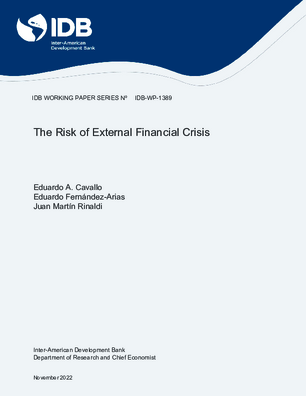The Risk of External Financial Crisis
Date
Nov 2022
This paper explores the empirical determinants of external crises on a world panel dataset of 62 countries over the fifty-year period 1970-2019 and estimates their risk trade-offs with the aim of informing macrofinancial prudential policies. The determinants include countries external balance sheets, macroeconomic imbalances, and structural and global factors. It finds that information on the composition of gross positions in countries external financial portfolios is required to gauge the risk of external crisis: debt liabilities are the riskiest component, FDI liabilities are half as risky, and FDI assets are the most protective. Macroeconomic imbalances increase risk but are usually not the key drivers of crises. Adverse global shocks significantly leverage domestic risks. International reserves are powerful risk mitigants that provide high insurance value. The evidence shows that advanced economies are structurally more resilient to withstand exposure to weak external portfolios, macroeconomic imbalances, and global shocks. For the average country the risk of external crisis is on a declining trend mainly driven by improvements in the composition of external portfolio assets magnified by increasing financial integration as well as rising international reserves.




